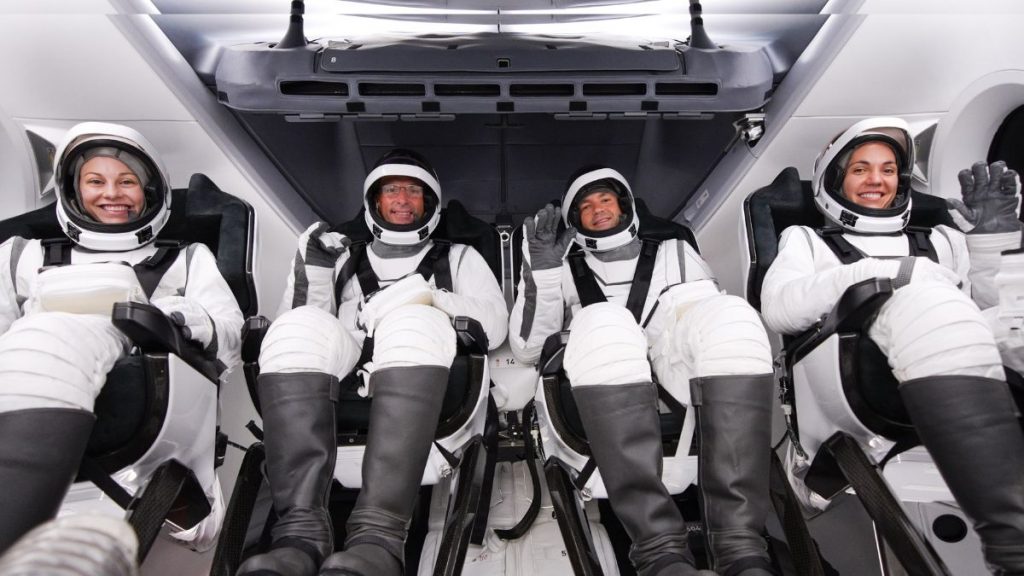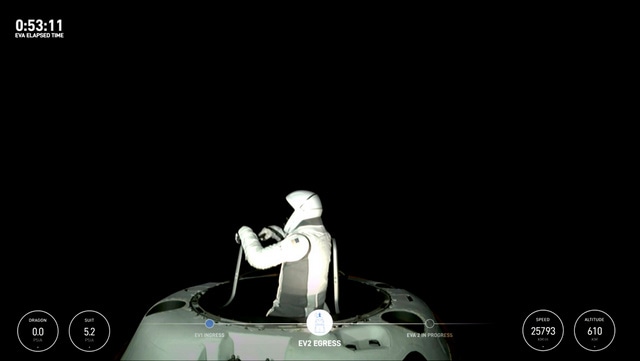BIllionaire Jared Isaacman, who is leading SpaceX’s Polaris Dawn mission, completed the world’s first privately managed spacewalk on Thursday. He was quickly followed by SpaceX engineer Sarah Gillis. Though the spacewalk was only scheduled to last a half hour, it took an hour and 46 minutes. From the crew purging their suits to Isaacman and Gillis climbing out of the Crew Dragon capsule and back inside and sealing the hatch, here’s how it all went down
SpaceX did it.
The Elon Musk-run firm pulled off the first private spacewalk on Thursday during its Polaris Dawn mission.
Billionaire Jared Isaacman, who is leading the mission, completed the world’s first privately managed spacewalk.
Isaacman was followed quickly by SpaceX engineer Sarah Gillis.
While the visuals weren’t as thrilling as when Neil Armstrong walked on the Moon on July 20, 1969 – nor did Isaacman have something as profound to say – but it was a big deal nevertheless.
Until now, only government astronauts have made spacewalks.
But how did the spacewalk unfold? What went into making it a success?
Let’s take a closer look:
How did it unfold?
Throughout Wednesday, the craft circled Earth at least six times in an oval orbit as shallow as 190 km and stretching out as far as 1,400 km.
This is the farthest in space that humans have traveled since the last US. Apollo mission in 1972.
The gumdrop-shaped spacecraft then began to lower its orbit into a peak 700-km position and adjust cabin pressure to ready for the spacewalk, formally called Extravehicular Activity (EVA), the Polaris program said on Wednesday.
The entire mission was streamed live on Twitter and YouTube.
The spacewalk officially kicked off with the all four members of the crew purging their suits.
“Pure oxygen is going to start flowing to the crew suits,” SpaceX communications manager Dan Huot explained to CNN before the mission. “That’s when the EVA clock will start.”
Though Scott Poteet, a retired US Air Force lieutenant colonel, and Anna Menon, a SpaceX medical officer and engineer were not making the walk, they too had to purge their suits ahead of the spacewalk.

This is because the Crew Dragon capsule does not have an airlock.
Thus Menon and Poteet, who remained inside, also needed their suits to survive.
The whole crew relying on their slim, SpaceX-developed spacesuits for oxygen, provided via an umbilical connection to Crew Dragon.
The suits were then pressurised and a check for leaks was conducted.
Nasa astronaut Mike Hopkins told CNN the leak check is “extremely important part of the whole process.”
“You want to make sure that your suit is maintaining the pressure that it needs to.”
The crew was then given the green light to vent the cabin – thus matching the pressure inside the craft to the vacuum outside.
Finally, Isaacman was told to open the Crew Dragon hatch.
“SpaceX copies, you are ‘go’ to open the hatch,” ground control said, as per Scientific American.
This didn’t go smoothly.
It took Isaacman a few awkward tries before he finally got the hatch open.
He also had to manually pull it rather than simply pushing a button.
Isaacman then moved up the ‘skywalker’ ladder installed inside the capsule and poked his head outside the capsule.
The live feed of the mission, broadcast on social media worldwide, also kept blacking out.
But cameras on board caught his silhouette, waist high at the hatch, with the blue Earth beneath.
“Back at home, we all have a lot of work to do. But from here, it sure looks like a perfect world," Isaacman said as the capsule soared above the South Pacific.
The first private spacewalking involved more stretching than walking.

Isaacman kept a hand or foot attached to it the whole time as he flexed his arms and legs to see how the spacesuit held up.
As per Scientific American, Isaacman at one point, with his feet firmly planted, let go of skywalker with his hands.
After roughly 10 minutes outside, Isaacman was replaced by SpaceX engineer Sarah Gillis to go through the same motions.
